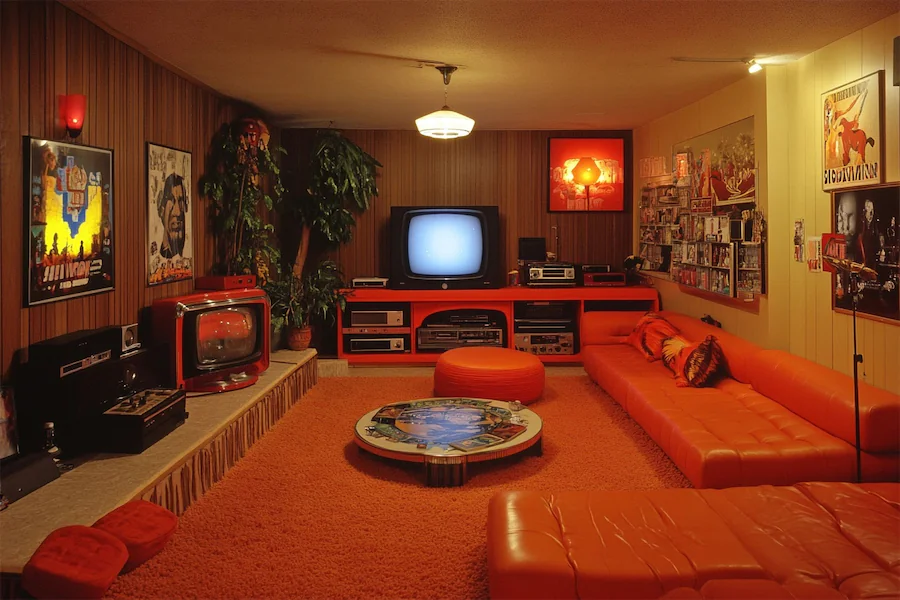Designing a Retro 70s entertainment room allows you to recreate the vibrant and eclectic atmosphere of the 1970s, characterized by bold colors, unique patterns, and distinctive furnishings. Here’s a comprehensive guide to achieving this nostalgic aesthetic:
Introduction to Retro 70s Entertainment Rooms
The 1970s interior design is renowned for its daring color schemes, geometric patterns, and a blend of natural and synthetic materials. An entertainment room inspired by this era offers a lively and inviting space, perfect for social gatherings and leisure activities.
History and Origins of 70s Interior Design
The 1970s marked a departure from the minimalist designs of previous decades, embracing maximalism and self-expression. This period saw the rise of open floor plans, sunken living rooms, and a fascination with futuristic forms, all contributing to a distinctive and dynamic interior style.
Key Features of Retro 70s Entertainment Rooms
- Bold Color Palettes: Incorporate vibrant hues such as avocado green, mustard yellow, burnt orange, and deep browns to capture the essence of 70s design.
- Geometric Patterns: Utilize geometric designs in wallpapers, rugs, and upholstery to add visual interest and a retro flair.
- Shag Carpets: Introduce plush shag carpeting to provide comfort underfoot and enhance the room’s cozy ambiance.
- Vintage Furniture: Select low-profile sofas, modular seating, and iconic pieces like egg chairs to reflect the era’s distinctive furniture trends.
- Wood Paneling: Incorporate wood-paneled walls to add warmth and texture, a hallmark of 70s interiors.
Applications of Retro 70s Style in Entertainment Rooms
- Seating Arrangements: Arrange modular seating to facilitate social interaction, reflecting the communal spirit of the 70s. Consider sunken seating areas, known as conversation pits, for an authentic touch.
- Entertainment Centers: Opt for vintage-inspired media consoles with wood finishes to house modern entertainment systems while maintaining a retro aesthetic.
- Lighting: Incorporate statement lighting fixtures such as globe pendant lights, lava lamps, or floor lamps with bold designs to enhance the room’s ambiance.
- Decorative Accents: Add retro accessories like vinyl record displays, abstract art, and macramé wall hangings to complete the 70s look.
Considerations When Designing a Retro 70s Entertainment Room
- Balance: While embracing 70s aesthetics, balance bold elements with neutral tones to prevent the space from feeling overwhelming.
- Modern Comforts: Integrate contemporary amenities seamlessly to ensure the room meets current entertainment needs without compromising on style.
- Personalization: Incorporate personal touches and memorabilia to make the space uniquely yours while staying true to the retro theme.
Conclusion
A Retro 70s entertainment room offers a vibrant and nostalgic environment, perfect for entertaining and relaxation. By focusing on bold color schemes, iconic furniture pieces, and distinctive decorative elements, you can create a space that captures the essence of 1970s interior design while accommodating modern comforts.
